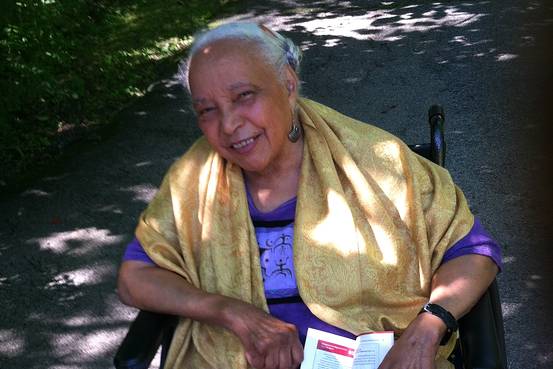Dr. Margaret Morgan Lawrence was the first African American female psychoanalyst. She witnessed racism at its core and rose to be an expert on children’s mental health disorders in the US.
According to the New York Times, she was often being mistaken for a cleaner, yet she pressed on to become a renowned pediatrician and child psychiatrist – the first African-American woman to attain that feat in the U.S.
Describing her in The Wall Street Journal in 2015, her daughter, Sara Lawrence-Lightfoot, wrote: “My mother is an extraordinary woman and trailblazing physician who in her career — first as a pediatrician, then as a child psychiatrist and psychoanalyst — faced the virulent barriers of racism and sexism with a deft blend of grit and grace.”
Lawrence-Lightfoot chronicled her mother’s journey in a biography the two collaborated on; “Balm in Gilead: Journey of a Healer” – published in 1988. She was born in Harlem, New York, in 1914, to an Episcopal priest and school teacher, but her career began at New York-Presbyterian in the 1940s.
Her interest in medicine at a young age was informed by her older brother’s death. He reportedly died from a congenital condition. She wanted to be a doctor in order to save a child like her brother.

According to reports, her mother suffered from episodes of depression and that reinforced her quest to be a healer, having been impacted by her father’s preaching and her witnessing spiritual healing as a child.
In a bid to get a better education, 14-year-old Lawrence at the time moved to Harlem to live with her aunts. She was admitted to the selective Wadleigh High, a public exam school for girls where she graduated with top prizes in Greek and Latin and a full academic scholarship to Cornell University.
She arrived in Ithaca as the only black undergraduate on Cornell’s campus in 1932, but she was not permitted to live in the dormitories. She had to live in the home of a white family where in exchange for a room in the attic, she did chores.
As illustrated by her daughter’s Wall Street Journal essay, Dr. Lawrence “worked as a maid in the homes of faculty members, often serving them breakfast before she went off to class, and returning at lunchtime to change into her maid’s uniform before going back to campus for the afternoon.”
After her senior year at Cornell, Dr. Lawrence was denied at Cornell’s School of Medicine. The dean told her that “Twenty-five years ago there was a Negro man admitted … and it didn’t work out… he got tuberculosis.”
Describing the rejection, Lawrence-Lightfoot, wrote that her mother’s “pain cut right to her soul.” Dr. Lawrence did not give up and finally got accepted to Columbia University College of Physicians and Surgeons with the condition that white patients in Presbyterian Hospital (now New York-Presbyterian/Columbia University Irving Medical Center) could refuse to be seen by her.
Once again she was the only black woman in her class and Dr. Lawrence applied for an internship at Babies Hospital (now New York-Presbyterian Morgan Stanley Children’s Hospital). Again, her application was denied. This time because the doctors’ residence was for men only and the nurses. Apparently, a black woman wasn’t an option for consideration.

She eventually returned to her community and had her internship at Harlem Hospital. “She saw the corrosive effects of poverty and racism, and recognized that to be a doctor in Harlem meant fighting against the oppressive conditions of her patients’ lives,” her daughter wrote.
After her internship, in 1943, she enrolled at the Columbia University Mailman School of Public Health where she earned her Master of Science. From 1943 to 1946, she taught pediatrics and public health at Meharry Medical College in Nashville, Tennessee.
Dr. Lawrence never gave up. She pursued a fellowship in pediatrics at Babies Hospital, the same place she had been rejected but this time, she was welcomed. She also enrolled at Columbia University’s Psychoanalytic Clinic for Training and Research as its first black trainee, and where she obtained her certification in psychoanalysis.
Years later, she applied for a residency, and in 1948, she was the first African American admitted to the New York Psychiatric Institute (then called Columbia’s Psychiatric Institute and located on Columbia’s campus in Washington Heights).

In 1953, Dr. Lawrence who was in Rockland County, New York became the first practicing child psychiatrist in the county. She was said to be dedicated to the underserved and keen about children’s mental health using a play and artwork therapy.
Dr. Lawrence returned to Harlem Hospital to head the Developmental Psychiatry Service In 1963 and she served for well over 20 years. She was an associate clinical professor of psychiatry in the College of Physicians and Surgeons until 1984. She also served on the New York State Planning Council for Mental Health throughout the 1970s and ’80s and authored two widely used textbooks on treating children with mental impairments. In 1992, Cornell University awarded Dr. Lawrence with its Black Alumni Award. She continued to see patients until she was 90 years old.
Unfortunately, Dr. Lawrence passed away on December 4, 2019, at the age of 105 and was referred to by The New York Times as a “pioneer therapist of young urban families in Harlem, a survivor of seven decades of struggle, change, and achievement.”
“She devoted herself to the underserved and developed pioneering programs in child psychotherapy in schools, daycare centers, and clinics, and innovative methods that are still used by clinicians today,” according to reports.










